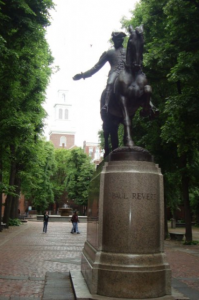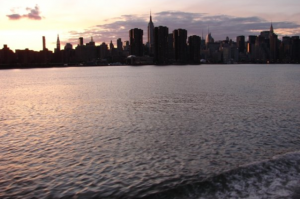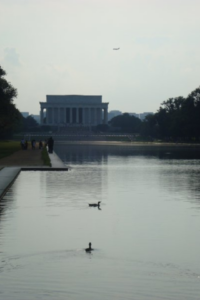America is one enormous country, no doubt about it. It covers more surface area than most people will traverse in their lifetime, and yet, has a history that takes up a relatively small part of the world’s archives. Luckily, because its story is so recent, it’s still easy for us to see just how these States came to be United.
If you hop on an Amtrak train to journey from Boston to Washington, D.C., you’ll see all of the cities that have acted as America’s capital (save for Annapolis in Maryland), the place where the Declaration Of Independence was signed, and some of the greatest museums in the world. (Take note that the Amtrak trains are not tourist trains – they run according to a schedule and you’ll have to plan your stops accordingly. They are, however, the best way to get around if you’d like to get off the beaten tourist track.)
Start in Boston. You should have at least two full days here because you’re going to be doing a lot of walking, but stay longer if you can manage it.
 Make your way to Boston Common, the largest open park in the central city. Here you can pick up the start of the Freedom Trail which is a 2.5 mile walking route that’ll take you past 16 of the best sites in Boston. It starts at the gold-topped State House and will take you to places like the Old North Church where Paul Revere received the lantern signal that the British were arriving by sea and took off on his famous “The British are coming! The British are coming!” ride before the start of the Revolution. You’ll also see the Old South Meeting Hall where patriots planned the Boston Tea Party. The Freedom Trail is entirely free (how fitting) and can be easily navigated by the red brick line in the road that is marked with Freedom Trail medallions at each notable site. You’ll find many great lunch stops along the way, like the Faneuil Hall marketplace and the original Cheers bar.
Make your way to Boston Common, the largest open park in the central city. Here you can pick up the start of the Freedom Trail which is a 2.5 mile walking route that’ll take you past 16 of the best sites in Boston. It starts at the gold-topped State House and will take you to places like the Old North Church where Paul Revere received the lantern signal that the British were arriving by sea and took off on his famous “The British are coming! The British are coming!” ride before the start of the Revolution. You’ll also see the Old South Meeting Hall where patriots planned the Boston Tea Party. The Freedom Trail is entirely free (how fitting) and can be easily navigated by the red brick line in the road that is marked with Freedom Trail medallions at each notable site. You’ll find many great lunch stops along the way, like the Faneuil Hall marketplace and the original Cheers bar.
On your next day in Boston, hop on a subway out to Cambridge just over the Charles River, and take a tour of the prestigious Harvard University grounds. Harvard has moulded the minds of John Adams, Franklin Delano Roosevelt, JFK and Barack Obama, among countless others. Tours of Harvard Yard are given by effervescent young students for free (but they’ll definitely appreciate any gratuities!).
Next, catch the train from South or Back Bay stations in Boston, to NYC’s Penn Station. The express train will have you in the Big  Apple in 3.5 hours.
Apple in 3.5 hours.
New York City plays a large role in many historical moments for America – the Battle of Brooklyn was the largest in the American Revolution, and George Washington was inaugurated as the first president of the US here in 1789. It also acted as the capital city of the United States for a brief period.
I imagine you could live in New York City for years and never get bored – it’s an incredibly vibrant city, but you should be able to get a good feel for it in six or seven days. The historical districts are situated close to downtown Manhattan, because the island was built up from its lowest point. So start in the Financial District and work your way up Manhattan, taking in sites like Wall Street, Trinity Church, City Hall, Chinatown, Little Italy and Greenwich Village along the way.
Once you’re ready to leave New York, catch the same train from Penn Station to Philadelphia. The essential sights of this city can be seen in a lengthy lunch stop, so you can be in Washington by night. The two main things to see here are Independence Hall, where the Declaration Of Independence was signed in 1776, and the iconic Liberty Bell. Then grab a Philly Cheese Steak on Market Street for lunch!
 Embark on the last leg of your journey from Philadelphia’s 30th Street Station, bound for Washington, D.C. Like Boston, America’s capital city has countless sites to take in, most of which are free. You should spend at least three days here because you may be able to photograph the White House and the best monuments in one day, but the museums deserve more time and exploration.
Embark on the last leg of your journey from Philadelphia’s 30th Street Station, bound for Washington, D.C. Like Boston, America’s capital city has countless sites to take in, most of which are free. You should spend at least three days here because you may be able to photograph the White House and the best monuments in one day, but the museums deserve more time and exploration.
The Museum of American History, the Air & Space Museum and the National Archives (where the Declaration Of Independence, the Bill of Rights and the American Constitution are on show) are all must-sees, but the National Mall is packed with other museums too, offering something for every tourist.
These cities may be overrun with skyscrapers and crowds today, but in a world not too long ago, great minds were moulding our futures on these streets. I hope you enjoy walking in their footsteps!


